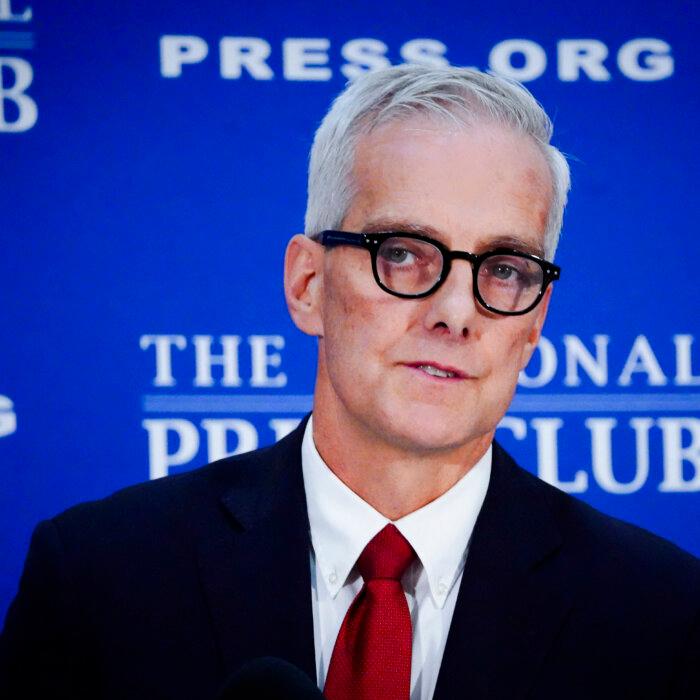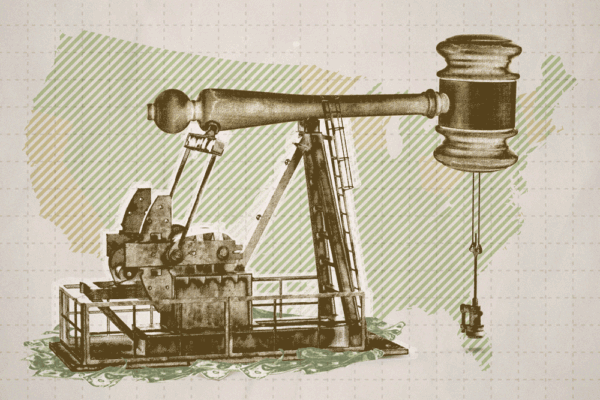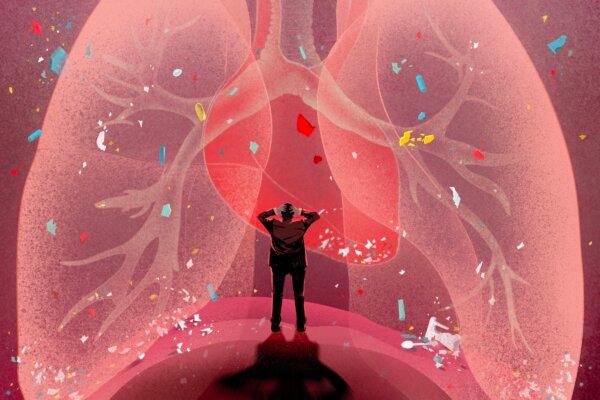OXFORD, Conn.—High above the muddy Hudson River, the D-Day Squadron had flown nearly 100 miles in tight formation to reach the towering spires of New York City.
Straight ahead, the mirror-blue One World Trade Center—Manhattan’s tallest building at 1,776 feet—rose majestically above a drab sea of skyscrapers.
Just beyond was the Statue of Liberty, with its torch of freedom reaching toward the clouds.
The five World War II-era aircraft banked left to get a better look at Lady Liberty perched on its island pedestal in the New York Harbor just before the return flight to Connecticut.
Eighty years ago, the view from the squadron’s C-47 troop transport aircraft, named That’s All, Brother, looked much different as it flew into a world war raging about 3,500 miles across the Atlantic Ocean.
The massive airborne operation took place in the pre-dawn hours of June 6, 1944—D-Day. That’s All, Brother was the first of hundreds of paratroop transport planes to deliver their human cargo over the heavily fortified beaches of Normandy, France.
At least 10,000 Allied soldiers (nearly 4,500 Americans) were killed or wounded during the land, air, and sea invasion on D-Day, and at least one-quarter of these casualties were airborne troops. Germany’s losses were between 4,000 and 9,000 men, either killed or wounded.
The military operation was the beginning of the end of the war in Europe.
The May 17 flight over New York City was a trial run for the D-Day Squadron’s 2024 Legacy Tour, which will commemorate the 80th anniversary of the historic invasion and the 75th anniversary of the Berlin Airlift in Wiesbaden, Germany.
On May 18, the squadron took to the skies once again from Oxford, Connecticut, this time on a transatlantic flight across the “Blue Spruce Route” used during World War II.
According to the D-Day Squadron, the Blue Spruce Route “refers to the ferry and refueling navigational path from North America to Europe that was leveraged during the war.”
“The significant undertaking aims to honor the courage and sacrifice of the Greatest Generation, promoting the enduring legacy of freedom and democracy they fought for,” it stated.
Five of the 11 aircraft in the squadron will complete the 3,000-nautical-mile journey to England and France in six days. Each plane will consume 36 gallons of oil and more than 1,600 gallons of fuel. The entire journey will require 80 crew members.

A collection of DC-3-type aircraft will lead the way with scheduled stops in Canada, Iceland, the UK, and France.
About 60 World War II veterans will be honored with a symbolic flight of these aircraft during ground ceremonies in Normandy on D-Day, June 6.
Max Gurney, 102, of San Diego is a proud member of the small contingent of surviving veterans who will witness the historic event.
“I’m very thrilled,” he told The Epoch Times in a phone interview. “I hope to meet some of these other veterans. For the time being, I don’t know who they are. It will be a return to the past.”
Mr. Gurney was among thousands of young men who enlisted in the Army right out of high school following the Japanese attack on Pearl Harbor on Dec. 7, 1941.
He said that at the time, anti-war sentiment in the United States had been running high. However, Pearl Harbor quickly galvanized public opinion in favor of entering the conflict in Europe.
“There was a complete change of mind, particularly with the students,” Mr. Gurney said. “It was on a Sunday morning. As of Monday and Tuesday, there was a fantastic unity in the country—particularly among the young people.
“It was a pivotal moment for the country. The reasoning changed. The necessity to support the war against the Germans and the Japanese was very sharp. There was no dissent.
“As you can imagine, my mother was particularly taken aback by the events. She always encouraged me to be as careful as all mothers today toward their sons and children.”

Born in Germany, Mr. Gurney grew up in New York City and served with the U.S. Army signal corps in North Africa during the war.
He considers himself a “lucky survivor.”
“The Germans had been extremely active, although we believed they couldn’t win the war,” he said. “They fought to the very end.”
After the war, Mr. Gurney spent the next 45 years working at Pan American World Airways. He said the DC-3 (the civilian version of the C-47) ranked as one of the most reliable aircraft during peacetime.
In war, it was a dependable workhorse.
Piloted by Lt. Col. John Donalson, That’s All, Brother led more than 800 C-47s that carried more than 13,000 paratroopers to drop zones on D-Day in 1944.
The airplane served in other large-scale operations, including Dragoon, Market Garden, and Varsity, before returning to the United States to be sold to the commercial market in 1945 after the war ended.
The airplane had many owners over the decades that followed, and its historical significance was lost.
Two U.S. Air Force historians eventually rescued the airplane from a scrap yard in Oshkosh, Wisconsin. A few years later, the Commemorative Air Force (CAF) acquired the airplane and restored it to its original 1944 khaki-green paint scheme and working condition.
“How do you put a price on history like this—the lead plane on the D-Day invasion?” CAF member and head of maintenance Ray Clausen, of San Antonio, said.
“This is physically the first [aircraft] of the actual paratroop invasion.”
Built by the Douglas Aircraft Co., the DC-3 began its long and storied career as a civilian aircraft in the 1930s. The company made more than 600 DC-3s before converting to military production of the C-47 Skytrain in the United States and the Dakota in the British Royal Air Force in 1943.
The propeller-driven airplane has two 1,200-horsepower engines and can reach a cruising speed of more than 200 miles per hour. The range of the DC-3 is nearly 1,500 miles on a single tank of fuel.


An estimated 164 DC-3s are still delivering cargo today.
While the C-47 Skytrain military version carried up to 18 paratroopers at a time, That’s All, Brother had more electronic equipment on board, limiting payload to a dozen paratroopers for each drop.
“For some reason, after the war, [That’s All, Brother] was brought back to the United States,” Mr. Clausen told The Epoch Times. “They found it sitting in the boneyard over at Oshkosh airport.”
Twenty years ago, Mr. Clausen volunteered to clean aircraft parts for the CAF so he could “just be around planes.”
“I was a gearhead as a kid and showed a mechanical aptitude. They suggested I get a mechanic’s license, which I did,” he said.
His work eventually brought him to That’s All, Brother as the aircraft’s lead mechanic.
“The planes were designed and built to be robust,” Mr. Clausen said. “If we stay ahead of it and do a lot of preventive maintenance, it’s actually a very cooperative and easy plane to fly.
“If you ignore things and let a problem go, it'll come back and bite you in a bad way. Parts are hard to find, and they’re expensive.”
Parked near the runway at Waterbury-Oxford Airport, That’s All, Brother was ready to make history once again, flying with the D-Day Squadron on the eve of the invasion’s 80th anniversary.
A seasoned mechanic, Mr. Clausen said there are no words to describe the way he feels about the plane.
“I get choked up thinking about it. It’s such an honor,” he said, his arm resting on the massive left wing. “I have a connection to it. It’s really thrilling to be a part of this.”
Visitors at the Oxford Airport were able to view the five vintage aircraft up close and listen as World War II reenactors explained the crucial role each airplane played during and after D-Day.
“Boy, it’s surreal sometimes—to know that we kind of fill the shoes of the veterans that didn’t come home,” Scott Fischer, dressed in the World War II uniform of a 1st Canadian Parachute Battalion paratrooper, said.
“It’s kind of an honor—a sense of pride. We appreciate what they went through and what we have today because of them. A lot of people have forgotten that.”
“When I put on this uniform, I’m not Scott Fischer,” the Fairfield, Connecticut, resident said. “Scott Fischer is a different guy. He owns a business. He works his tail off.
“I play the part—I am the part. I embrace it, and I enjoy it. And I try to get everybody else to grab that magic.”



Mr. Fischer first took part in a World War II reenactment in 2010, and from there, he was “hooked.”
He said when people forget history, it tends to repeat itself in painful ways.
Centenarian Mr. Gurney has had a lifetime to reflect on the war’s global effects and the fact that as times change, human passions do not.
And so it is in war.
“I think wars don’t solve very much,” Mr. Gurney said. “They end a temporary situation, and the passions, hate, and opposition, they grow proportionally to the world’s population.
“The changes in my lifetime have been gigantic. I try to understand some of the things that are going on today.
“It requires an effort, particularly because of technology.”
Wearing a World War II-era military aviator’s cap and leather jacket, Andrew Bleidner of Connecticut spent days traveling with the D-Day Squadron, gaining knowledge and insight for a narrative film that he’s producing in association with Steven Spielberg.
Mr. Bleidner said the project strikes close to his heart. His grandfather Arthur “Art” J. Negri was a side gunner on a B-17 bomber during World War II and earned the Bronze Star for saving the lives of four servicemen.
“He was a good man,” Mr. Bleidner said. “I’m making this film in tribute to him. It’s about coming together in times of adversity and understanding that type of brotherhood, that type of bond. It’s timeless.”
The National WWII Museum estimates that only 119,550 of the 16.4 million Americans who served and fought in World War II were alive in 2023, a number that diminishes almost daily.
“We have to collect their stories,” Mr. Bleidner told The Epoch Times. “We have to try to preserve as much as we can. If we keep a firm foothold in what the world has been through, then we can move forward. It’s the best way to run.
“We’re not looking to market this film to one person. It’s the human element.”
Up until his death on Dec. 12, 2012, Mr. Bleidner’s grandfather didn’t like to talk about his war experience.
Some things best remain buried in the past.
“You don’t always want to relive those things,” Mr. Bleidner said. “What you do keep with you is that sense of camaraderie and bonding through pain. The simple things are what matter.
“All the way to his death, all he wanted was a Coca-Cola and a bag of potato chips. He used to say: ‘Don’t drink the water [overseas during wartime]. Coca-Cola was a big part of keeping the soldiers happy.’”

Curt Lewis of San Antonio is the designated lead CAF pilot for That’s All, Brother, during the D-Day Squadron 2024 commemorative tour.
“It’s a little bit of a physical experience,” Mr. Lewis said of flying the C-47, with its 96-foot wingspan.
“It’s a bit of a noisy experience. This is a 26,000-pound airplane, all hydraulic controls, with no assist.”
Mr. Lewis said he considers it an honor to be the lead pilot of the same C-47 airplane that led the first airborne wave over Normandy 80 years ago.
The sad part, he said, is knowing there are “fewer and fewer [World War II veterans] every year.”
“The younger guys are 99 years old,” he said.
That’s All, Brother co-pilot John McKiski, 67, of Texas, a retired United Airlines pilot and longtime CAF member, wonders if there will be any World War II veterans still alive five years from now.
“That’s the thing,” he said. “When I was a kid in the CAF 48 years ago, there were World War II guys everywhere. Now, there are not many left. I don’t know how many are going to be in Normandy [in 2024]. The ones who are able will be there.”
“My uncle Don was a glider pilot on D-Day. He later flew C-47s. He was young and left at night, not knowing what was going to happen to him.”
He said that he'll sometimes think about his uncle while soaring above the clouds on buffeting columns of invisible air.
“One of the biggest things is to not let history die,” Mr. McKiski said. “This is a big deal. People sacrificed a lot for this.”
Craig Megargle has been a member of “Easy Company, 506th Band of Brothers Reenactment Unit” for several years. He wears the authentic uniform of an American officer with pride and honor.
And it is with pride and honor that his late father served with the 503rd Parachute Infantry Regiment as a paratrooper during World War II.
One day, Mr. Megargle was looking for a fitting way to honor his veteran father. It ended up being a “sort of a bucket list thing” to parachute out of a C-47, he said.
To do that, he first had to earn his “jump wings,” and the rest is family history.
“It was a rush,” Mr. Megargle said of the parachute jump, his voice thick with emotion. “It’s a living history thing. The guys that went before us—my dad—they were the real heroes.”


















